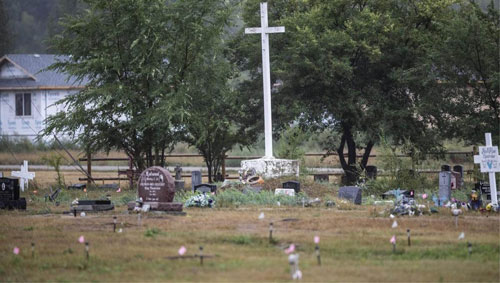An Indigenous community in Canada has identified nearly 100 “potential” graves at a residential school site, months after the discovery of hundreds of chil-dren’s remains at former boarding schools rocked the country.
The Williams Lake First Nation (WLFN) com-munity said on Tuesday that a geophysical survey revealed “93 reflections” with characteristics “in-dicative of potential human burials” at the former St. Joseph’s Mission residential school in British Columbia.
Investigators “surveyed approximately 14 hec-tares of the broader 480-hectare site”, which is about 300 kilometers (186 miles) north of Kamloops — where the remains of 215 children were found in May.
Since May, more than 1,000 anonymous graves have been found near former “Indian residential schools” run by religious groups, shedding light on a dark chapter in Canadian history and its policy of forced assimilation of First Nations people.
Thousands of Indigenous children attended St. Joseph’s Mission between 1886 and 1981 when it operated as a residential school run by various reli-gious sects as part of a Canadian government sys-tem, according to WLFN, a community of around 800 people.
“There is much more work to do on the St. Jo-seph’s site, and we have every intention of continu-ing with this work,” WLFN Chief Willie Sellars said in a statement.
In early January, Ottawa announced $1.9 mil-lion Canadian dollars ($1.5 million) in funding for the investigation at St. Joseph’s mission.
“To date, $116.8 million has been committed to support First Nation, Inuit and Metis Survivors, their families and communities and go toward locat-ing and commemorating missing children who at-tended residential schools,” the government said in a statement at the time.—AFP










